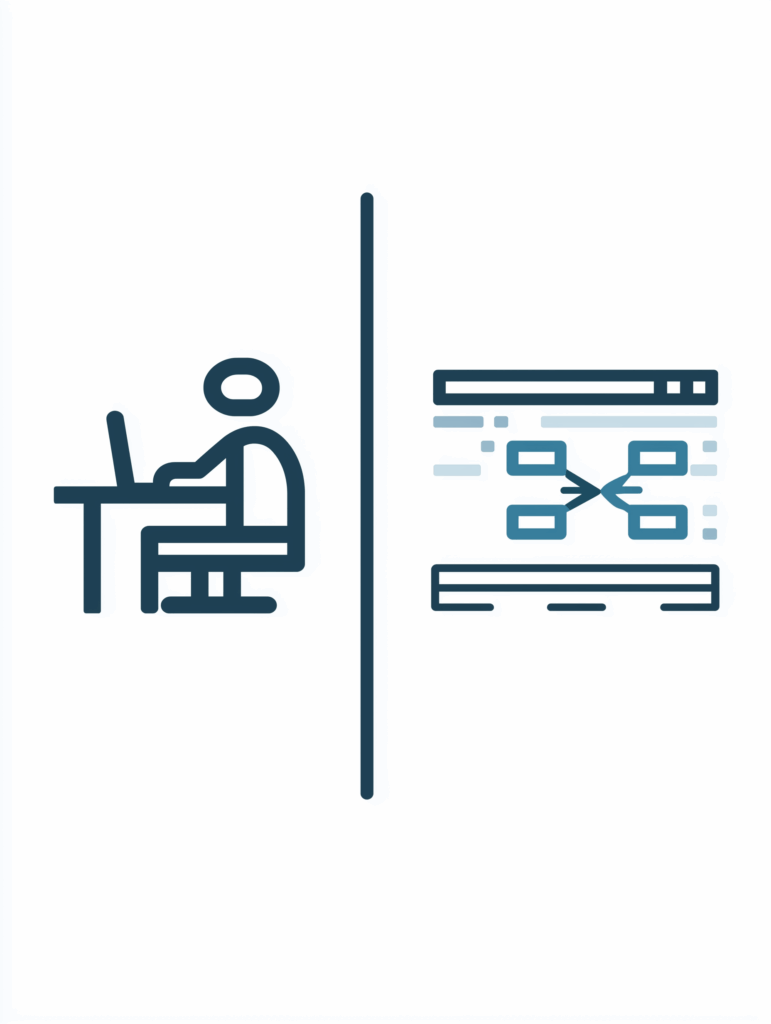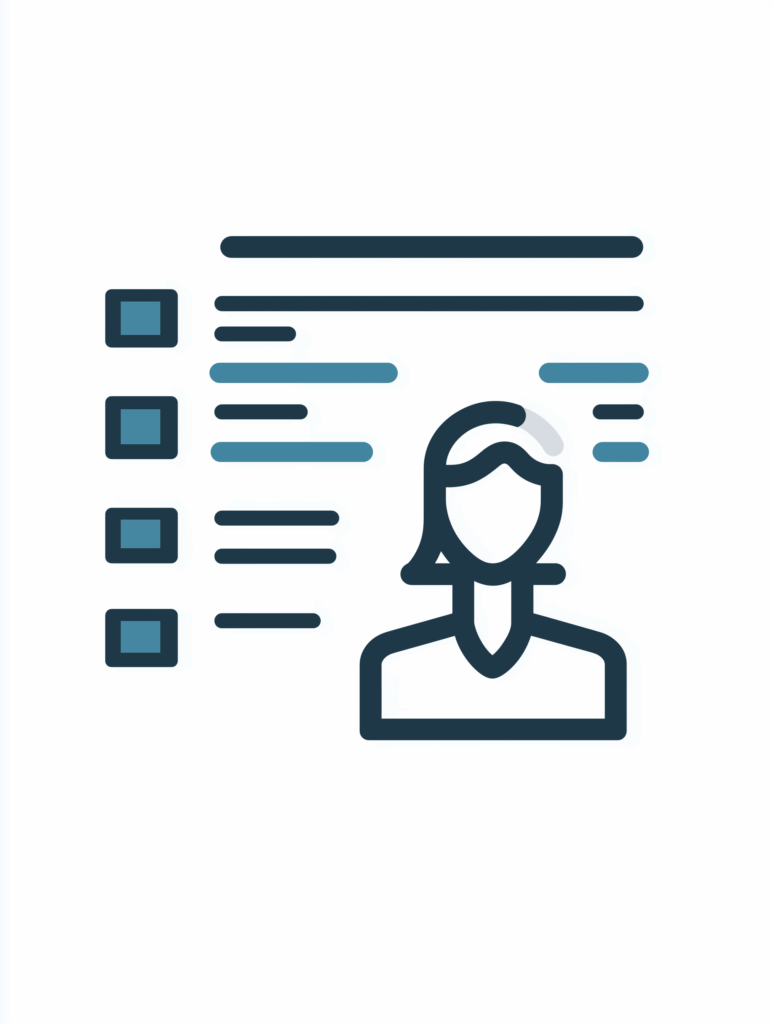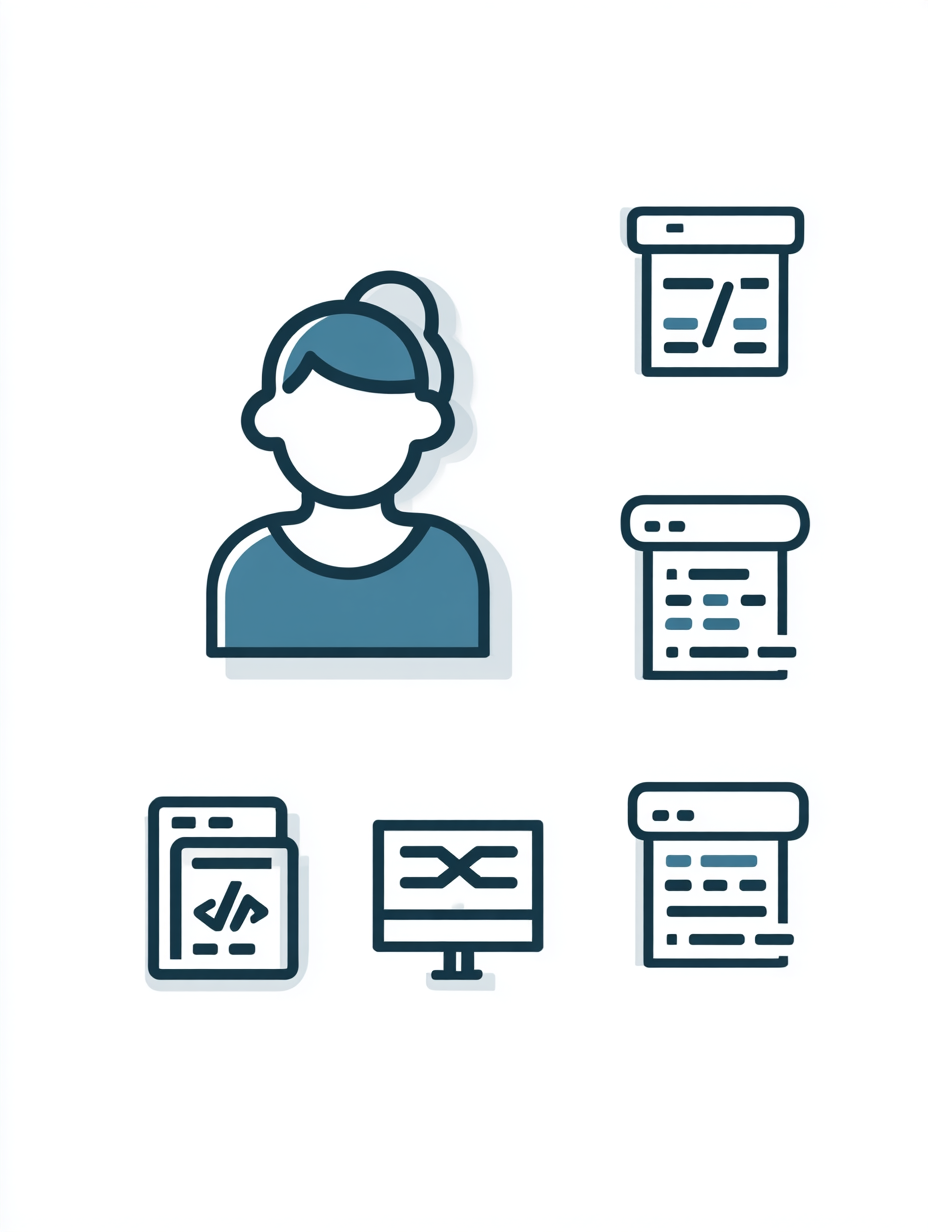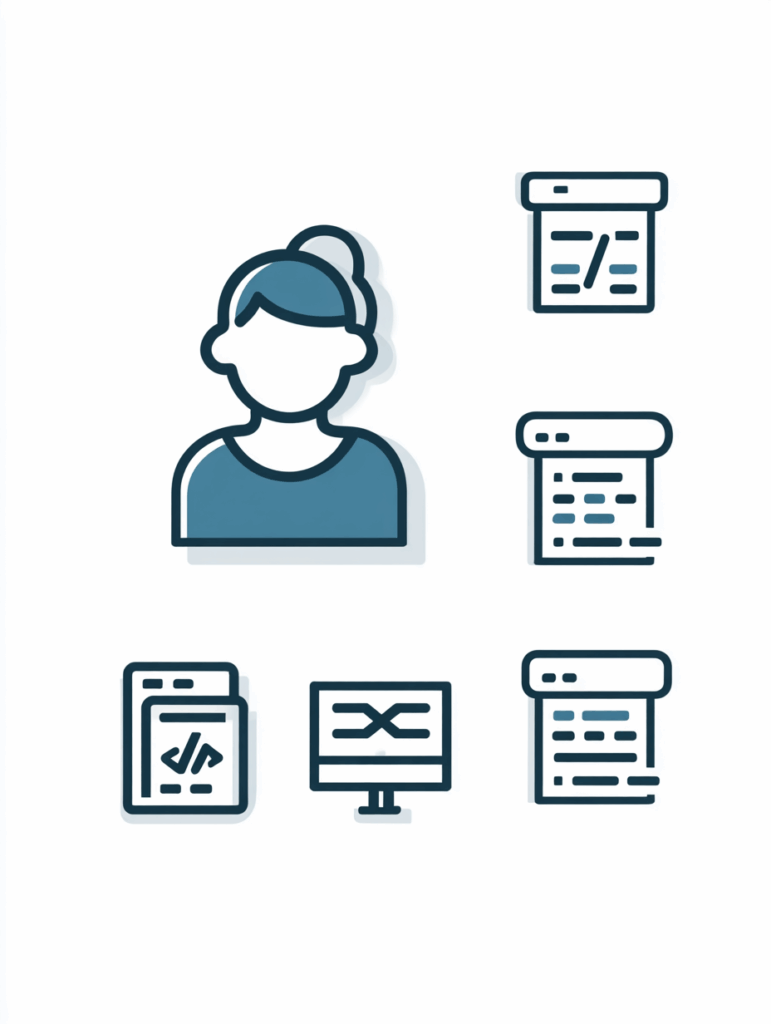Our Default Delivery Squad: The Core Six
Most of our engagements start with a 6-person core team. That’s our standard unit of execution: small enough to move fast, large enough to own end-to-end outcomes.
A typical Core Six looks like this:
- Architect
- Delivery Lead – Project Manager / Scrum Lead
- Product Lead – Product Manager / Business Owner Proxy
- Experience Lead – UX / Service Design
- AI Engineer
- Software Engineer

Not all of these are 100% allocated full-time. Some are fractional or rotating roles depending on the phase of work (e.g., discovery, build, rollout).
Think of the Core Six as your default “strike team”: fully capable on its own, and expandable with additional specialists as complexity grows.
Architecture
The backbone of the Auxiliary Digital team structure. Keeps the solution front and center. for the entire team from project start to project finish
Delivery Team
Project can be flexible with Project, Product, Design and User Experience. This is the most flexible part of an Auxiliary Digital team.
Engine Room
Software engineers has special skills. Auxiliary Digital engineers’ skills are aligned to project and solution needs
The Architect

Your Architect is responsible for:
- Technical direction and integration
Defining architecture, integration patterns, and the AI/ML approach that actually fits your environment. - Guardrails and standards
Making sure we don’t create a clever demo that can’t be supported or scaled by your teams. - Connecting business intent to code
Translating strategy and constraints (security, compliance, data residency, legacy systems) into real design decisions. - Mentoring the team
Raising the level of everyone on the squad—your engineers and ours.
You can swap in and out other roles.
You don’t swap out the Architect.
That’s the spine of the engagement.
Flexible Layer: Delivery, Product, and UX

Delivery Lead
(Project Manager / Scrum Lead)
Some clients already have strong delivery management. Others don’t. We adjust:
Or we plug into your existing PMO/Scrum and provide only what’s missing (e.g., tech-savvy sprint leadership instead of another status-report generator).
We can run the full Agile cadence (backlog grooming, sprint planning, demos, retros).

Product Lead
For some projects, product direction is clear and owned internally. For others, it’s fuzzy. Our Product Lead can:
- Turn vague mandates (“make this more AI-powered”) into clear, testable outcomes.
- Prioritize work with a business lens (ROI, risk, regulatory constraints).
- Bridge the gap between clinical/operations leaders, business stakeholders, and engineering.
If your organization has strong product leadership, this role can be fractional or shared.

Experience & Design
UX and design are rarely full-time for 12 months straight. We treat this as a high-leverage, targeted role:
- Early: journey mapping, service design, architecture of the end-to-end experience.
- Mid: UX flows, interaction patterns, visual design for key screens.
- Late: usability refinements, content strategy, systemization of patterns.
We dial design support up or down based on whether the work is net-new UX or deep in internal tooling and APIs.
The Engine Room: AI & Software Engineers

Once the spine (Architect) and orchestration (Delivery/Product/UX) are set, we fill the remaining seats with the right mix of engineering skills.
We don’t pretend all “AI Engineers” or “Software Engineers” are interchangeable. We pick from a bench of specialized roles, for example:
AI & Data Roles
- AI Engineer (LLM workflows, agents, RAG, orchestration)
- Data Scientist / ML Engineer
- MLOps Engineer (deployment, monitoring, retraining pipelines)
- Data Engineer (pipelines, FHIR/EHR/ERP integration, streaming, warehouses)
Software & Platform Roles
- Backend Engineer (Rails, Node, Java, .NET, Python, etc.)
- Frontend Engineer (React, Next.js, Vue, Web Components)
- Full-Stack Engineer
- Cloud / DevOps Engineer (AWS, Azure, GCP, Cloudflare, Kubernetes)
- QA Automation / SDET
- Integration Engineer (APIs, middleware, legacy systems)
From your perspective, the Core Six is simple.
Behind the scenes, we’re tuning the role mix and seniority to your stack and your risk profile.
“Default” but Not Rigid: How We Customize Teams
Saying “we’re completely custom” without showing structure is meaningless.
Here’s how we actually tailor teams:
Context First
Your tech stack and architecture
(what already exists).
Your constraints
(regulation, data sensitivity, security patterns).
Your internal capabilities (where you’re strong, where you’re thin).
Define the Work Type
AI Pilot / Proof of Value
Platform Extension
(new AI layer on existing systems)
Workflow Automation / Orchestration
Full greenfield product build
Legacy modernization with AI augmentation
Pick the Team Pattern
We start from the Core Six, then adjust:
More integration-heavy: extra Backend / Integration Engineer, Cloud/DevOps, smaller design footprint.
More AI-heavy: add Data Scientist + MLOps; keep Product fractional.
More product-heavy: full-time Product Lead, heavier UX, leaner AI footprint.
Adjust Over Time
Discovery might be Architect + Product + UX heavy.
Build might shift to AI + Software Engineering heavy.
Rollout might temporarily add more QA, DevOps, or training/content roles.
The team you see at kickoff is not frozen.
It’s managed like a living system, re-weighted as we move through phases.

